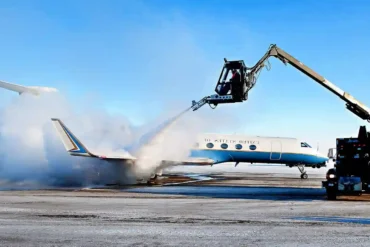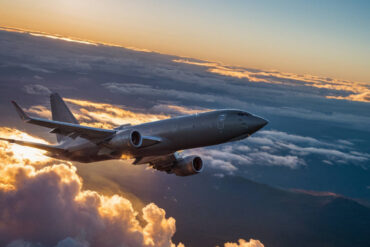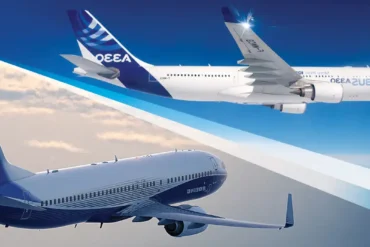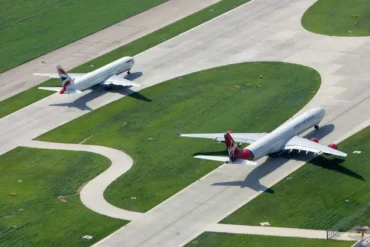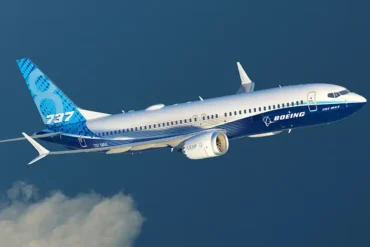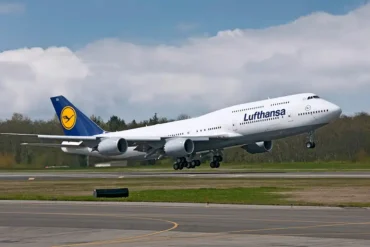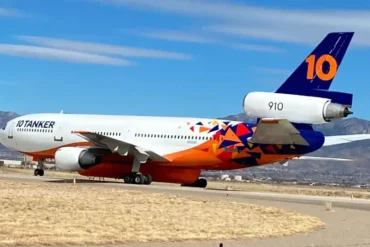Have you ever looked closely at an airplane’s propellers and wondered which way they spin? Although it can be hard to see clearly when they’re moving fast, there’s a clue you can spot even when the engine is just starting up.
Even though propeller-driven airplanes are less common today, you can still see them on many small General Aviation aircraft and some military transport vehicles like the Cessna 172 and the powerful turboprop-engined Airbus A400M Atlas. Let’s explore how airplane propellers spin.
On modern commercial airplanes, most have at least two engines for added safety and performance. But here’s an interesting historical fact – older airplanes sometimes had counter-rotating propellers, meaning when one spun clockwise, the other went counter-clockwise! Although counter-rotating props had some advantages, the extra gearboxes eventually led to them being phased out.
Nowadays, most flights involve a simple spin pattern. Whether you’re looking from the back or front of the airplane, you’ll see the propellers on both engines spinning clockwise when viewed from behind the aircraft, or counter-clockwise when you’re facing the front. This is true for popular planes like the ATR72 and Bombardier Dash 8-400.
Choosing an Engine Spin Direction: Clockwise or Counter-Clockwise?
Opting for engines that spin in the same direction offers big maintenance cost savings. Having matching clockwise-spinning gearboxes means many shared spare parts. This cost efficiency becomes even more significant across large fleets, which is why most commercial airplanes use this setup.
However, this design choice isn’t flawless. In emergencies, these planes have to deal with a “critical engine” that causes asymmetrical yawing. For most commercial aircraft, the left-hand engine spinning clockwise makes it the critical one. Controlling the airplane is noticeably harder if that critical engine fails compared to the other.
Counter-Rotating Engines
On the other hand, counter-rotating engines avoid the concept of a critical engine entirely. Since both spin inward, failure of one engine doesn’t cause uneven yawing. But engine failures are rare, and asymmetry can be corrected, so manufacturers have stuck with single-direction engines on modern aircraft.
Counter-rotating engines were more popular on early airplanes. The pioneering Wright Flyer, which made the first sustained manned flight 120 years ago, used counter-rotating props to prevent engine torque from pulling the plane off course.
In a more modern setting, the Airbus A400M Atlas uses counter-rotating engines too. Although its four engines spin the same way, numbers 3 and 4 have propellers spinning counter-clockwise. This special gearbox adds complexity compared to smaller twin-engine planes.
Unpacking Contra-Rotating Propellers
Then there’s the contra-rotating propeller, a unique design with two propellers connected to one engine. Sitting one behind the other, these props spin in opposite directions, with power transmitted through planetary or spur gears.
Contra-rotating propellers have pluses and minuses. Done right, they cancel out aircraft torque and can be 6-16% more efficient than normal props. But they tend to be very noisy, limiting use on commercial flights.
A good example of contra-rotating props is the Russian Tu-95 strategic bomber. Powered by four Kuznetsov NK-12 engines, it has two sets of propellers spinning opposite ways. Known for its deafening noise – the prop tips can break the sound barrier – the Tu-95 remains the only propeller-driven strategic bomber in active service today.
Jet Engines Take the Stage
With jet engines, manufacturers get to choose blade rotation direction. Weight and inertia drive the choice more than a need to avoid a critical engine.
Spotting rotation on a jet at full power can be tricky. But engine makers have conventions: Rolls-Royce and CFM engines mostly spin clockwise, while GE and Pratt & Whitney favor counter-clockwise.
For plane-spotters, the white swirl on a jet engine may hint at spin direction. But its main purpose is showing ground staff the engine is active, not indicating spin.

